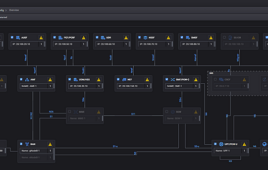T-Mobile on Wednesday introduced next-generation phone number technology that allows both cross-device capabilities with a single number and multi-number hosting on a single device.
What is it?
Dubbed “DIGITS,” the solution works on “virtually any Internet-connected device” – including smartphones and feature phones, tablets, wearables, and computers – to allow users to send and receive calls and texts and check voicemail on whatever device they have at hand. The key there is continuity, which T-Mobile said it preserves by allowing users to view message history and contacts by logging in on whatever device they’re using. RCS messaging capabilities will be baked into the service, T-Mobile noted.
T-Mobile said DIGITS will also allow users to load multiple phone numbers on one device, which might come in handy for users with separate business and personal lines and some of the 30 million Americans the Un-carrier said currently carry multiple devices. Business can give DIGITS to their employees for use on their personal devices, even if those devices run on AT&T, Verizon, or Sprint, T-Mobile said. If an employee leaves, the company gets to keep the DIGITS as well as contacts associated with the account, T-Mobile said.
The Un-carrier said the phone number overhaul is long overdue.
“Just because we don’t question (the need for phone numbers) doesn’t mean it doesn’t suck,” T-Mobile COO Mike Sievert said in a video announcing the technology. “I mean think about it. Why, when you can email and do a gazillion other things from any device with an internet connection, are your calls and messages still trapped on one specific phone? Why can’t your phone number be like your email?”
“Our one single phone number is our entire identity,” Sievert continued. “The real limitation here is that your phone number only works on that one phone. And if you don’t have that phone, you’re screwed.”

Screengrab credit: T-Mobile via Youtube
How does it work?
According to T-Mobile, DIGITS was made possible through the construction of a new IP Multimedia Subsystem service management layer and Identity Management solution that identifies customers using their DIGITS rather than authenticating devices through their SIM cards.
And Sievert, in the video, said DIGITS uses a circuit-switched or voice-over-LTE calling connection every time a customer calls from T-Mobile’s network.
“DIGITS is based on a complete redo of how phone calls are managed by our network,” T-Mobile CTO Neville Ray said in the video. “In today’s world, you’re authenticated on the network via the HLR (Home Location Register) by that one phone number locked to your one device … You should know that this represents years of work at T-Mobile, major renovation and multiple new platforms touching nearly every single part of our core network. And this innovation is protected by patent-pending IP, making what we’ve done here incredibly difficult to copy or replicate.”
Now, it’s worth noting that other carriers have also been experimenting and implementing similar solutions over the past year or so.
Back in October 2015, rival carrier AT&T announced its NumberSync service that allows users to send and receive calls over multiple connected devices – including tablets and wearables – using their regular phone number.
And in February, Mast Mobile debuted a new service allowing employees and freelancers to add a separate business line to their personal device. Even Verizon has dipped its toe into the cross-device pool – albeit from the business end – with its One Talk solution that lets employees move calls between their desk and mobile phone, or program both to ring at the same time.
Apple also offers continuity technology that lets users call or text across iOS devices, like an iPhone and a MacBook Air.
But during a press call on Wednesday, Ray noted DIGITS is different from these other solutions in that it works across nearly all OS and device manufacturer ecosystems.
“None of those constraints exist with DIGITS,” Ray said.
Additionally, Ray stressed that DIGITS is a network-based solution, rather than an over-the-top deliverable. Ray said T-Mobile isn’t breaking the telephony standards that exist, but is deploying “innovation on top of standards-based solutions.”
For example, where DIGITS is installed on devices running on rival carrier networks, Sievert said the solution will “tap into the core dialing functions of those other carriers,” utilizing that phone’s carrier connection and that carrier’s carrier-grade connection to deliver calls.
“Behind the scenes, if you’re on an AT&T phone with DIGITS and you call recipients, what’s happening instead is our app is telling the phone to call a phantom place in our network where we in turn reroute it to your recipient and make sure that the caller ID is appropriate for the DIGITS number and not the underlying AT&T phone’s number,” Sievert explained.
How can I get it?
T-Mobile said DIGITS will be offered in a limited free beta edition to active postpaid customers on Simple Choice and T-Mobile One individual and family accounts. Participants who register for the beta solution will need Android 5.0 and newer; iOS 9.0 and newer; or Mozilla Firefox or Google Chrome on Mac and PC.
The Un-carrier said customer feedback will help shape the final version of DIGITS, which will be launched commercially early next year.
T-Mobile said DIGITS will be natively included in a handful of Samsung devices, but will also be available as an app for iOS and Android devices. Customers will be able to port numbers both into and out of DIGITS, Sievert said.
T-Mobile is keeping mum on the commercial pricing for now, but Sievert said watchers can expect the Un-carrier to be – surprise! – “really disruptive” on that front. He said a T-Mobile relationship will be required for customers to use the service, but said it will be “affordable.”
“We’re not going to charge for this as if you’re adding new data buckets or new lines,” he said. “We believe the era of the data bucket is over.”




